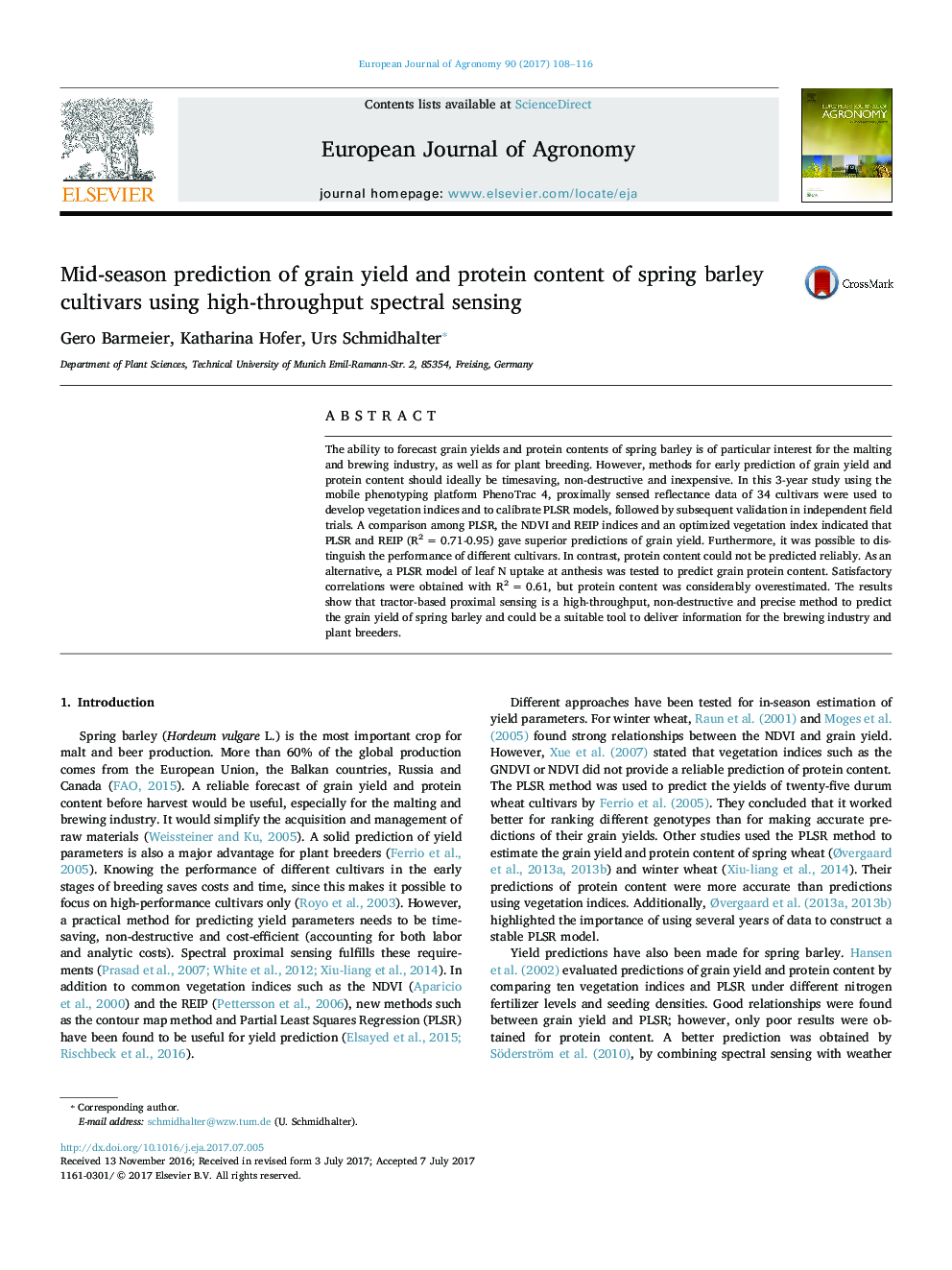| Article ID | Journal | Published Year | Pages | File Type |
|---|---|---|---|---|
| 5761187 | European Journal of Agronomy | 2017 | 9 Pages |
Abstract
The ability to forecast grain yields and protein contents of spring barley is of particular interest for the malting and brewing industry, as well as for plant breeding. However, methods for early prediction of grain yield and protein content should ideally be timesaving, non-destructive and inexpensive. In this 3-year study using the mobile phenotyping platform PhenoTrac 4, proximally sensed reflectance data of 34 cultivars were used to develop vegetation indices and to calibrate PLSR models, followed by subsequent validation in independent field trials. A comparison among PLSR, the NDVI and REIP indices and an optimized vegetation index indicated that PLSR and REIP (R2Â =Â 0.71-0.95) gave superior predictions of grain yield. Furthermore, it was possible to distinguish the performance of different cultivars. In contrast, protein content could not be predicted reliably. As an alternative, a PLSR model of leaf N uptake at anthesis was tested to predict grain protein content. Satisfactory correlations were obtained with R2Â =Â 0.61, but protein content was considerably overestimated. The results show that tractor-based proximal sensing is a high-throughput, non-destructive and precise method to predict the grain yield of spring barley and could be a suitable tool to deliver information for the brewing industry and plant breeders.
Related Topics
Life Sciences
Agricultural and Biological Sciences
Agronomy and Crop Science
Authors
Gero Barmeier, Katharina Hofer, Urs Schmidhalter,
